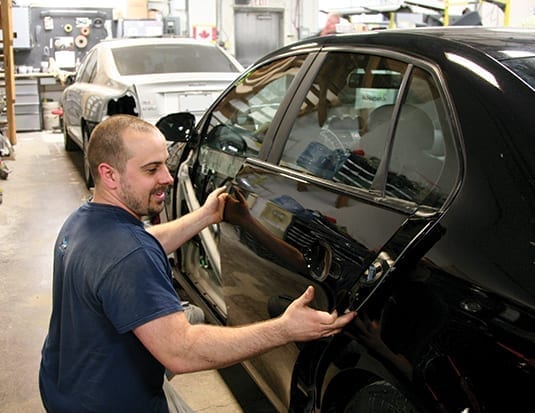In the first of a two-part series, we look at how insurance losses and vehicle repairs are becoming significantly more expensive.
Canadians are driving more but crashing less, which is welcome news. In spite of this, however, auto insurance loss costs are climbing even with fewer claims. That’s because claim severity is increasing at a rate that’s outpacing the decline in claims frequency. A number of factors are contributing to this trend.
“The two of the biggest factors have been more vehicles on the road and more miles driven, but much more significant is the increasing complexity of vehicle construction,” explains Jack Rozint, Vice President of Sales, Service and Repair Auto Physical Damage, Mitchell International.
“When you compare front end hits on late-model versus older vehicles, the accident severity on newer cars and trucks has gone up significantly. It’s really a function of the vehicle complexity. For instance, a bumper cover is no longer just a bumper cover. It will often feature embedded sensors and LiDAR radar, and there may be a camera in the grille. So, what used to be a $1,500 hit on the front end is now $2,500.”
Safety costs
Bruce Carrick, Director, Product Marketing, Audatex notes that based on analysis of vehicle safety equipment, some of the numbers are quite staggering. “A front bumper sensor is over $1000, and over the last three years, the frequency in which they are ordered has more than doubled.
“Other parts that haven’t really been on our radar include LED headlight assemblies,” continues Carrick. “That’s a $1,800 part, and we have seen a growth in that in the area of 5,000 percent over four years. You don’t see LED headlights on a lot of vehicles, but you can see where things are heading in terms of direction,” continues Carrick.
The vehicle mix is another contributing factor in the severity of claims. The vast majority of vehicles now sold tend to be crossover utilities and pickups while car sales continue to decline. And overall, these vehicles are more expensive to fix.
“If you look at severity and you look at the mix of vehicles sold last year, this trend will continue,” explains Carrick. “Most accidents happen to vehicles that have been on the road for a few years.
The average vehicle age per claim is seven years old and if we look down the road, another seven years from now, we will see a greater number of SUVs and trucks in the shops with a higher repair severity.”
Offset and balance
At Mitchell, Jack Rozint notes that ADAS equipped vehicles are offsetting accidents significantly, but “this is being offset almost equally by the number of distracted drivers that can’t put their phones down, so those two factors kind of balance each other out.
What we see is, the increasing complexity of newer vehicles is resulting in a higher repair cost. Collision repair shops may see fewer repairs, but the average cost of a repair is going up. If you follow this trend all the way out, you will eventually get to autonomous vehicles that the OEMs claim will result in zero collisions,” says Rozint.
Next time, we’ll look at other factors that are conspiring to change both the cost and nature of collision repairs.



